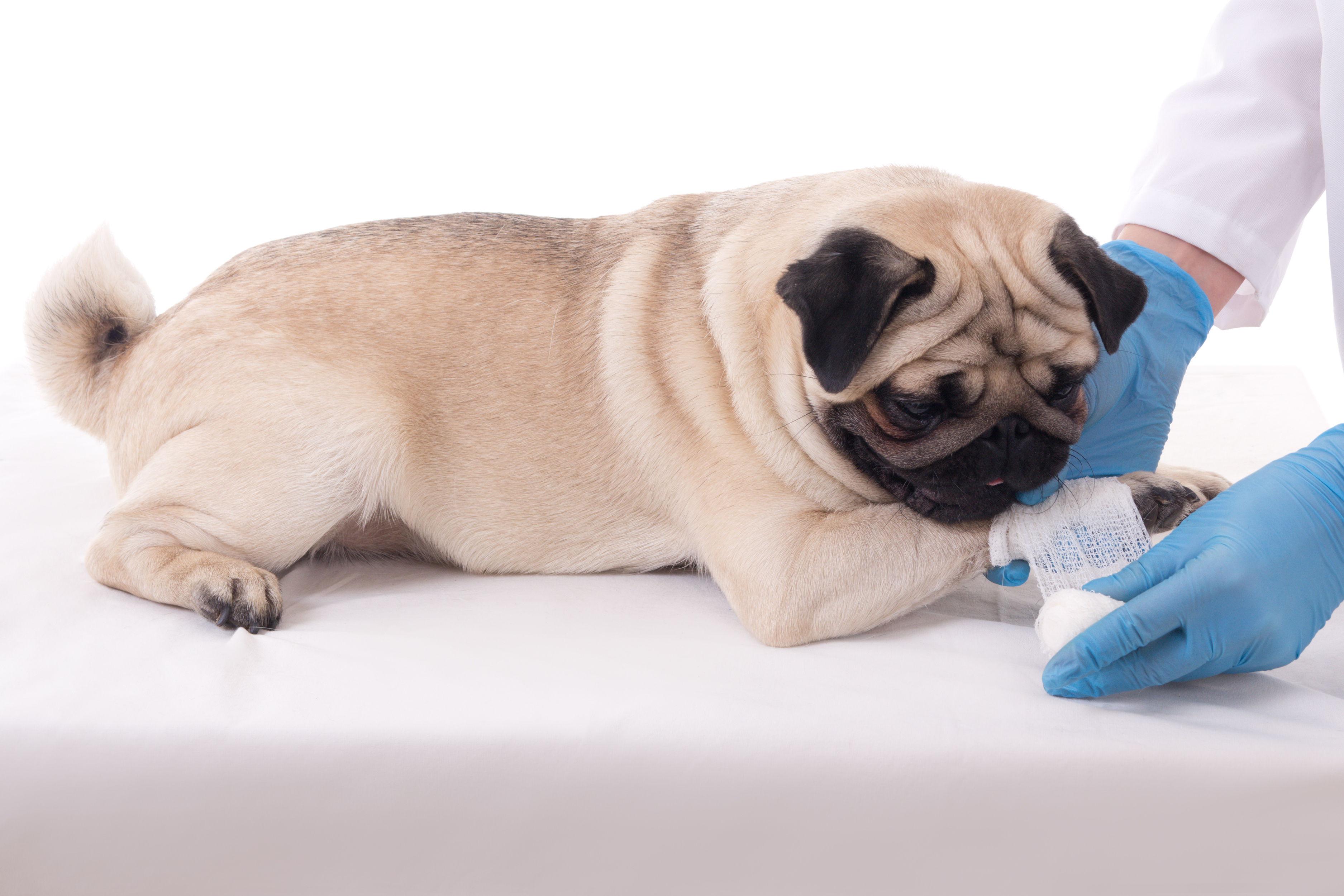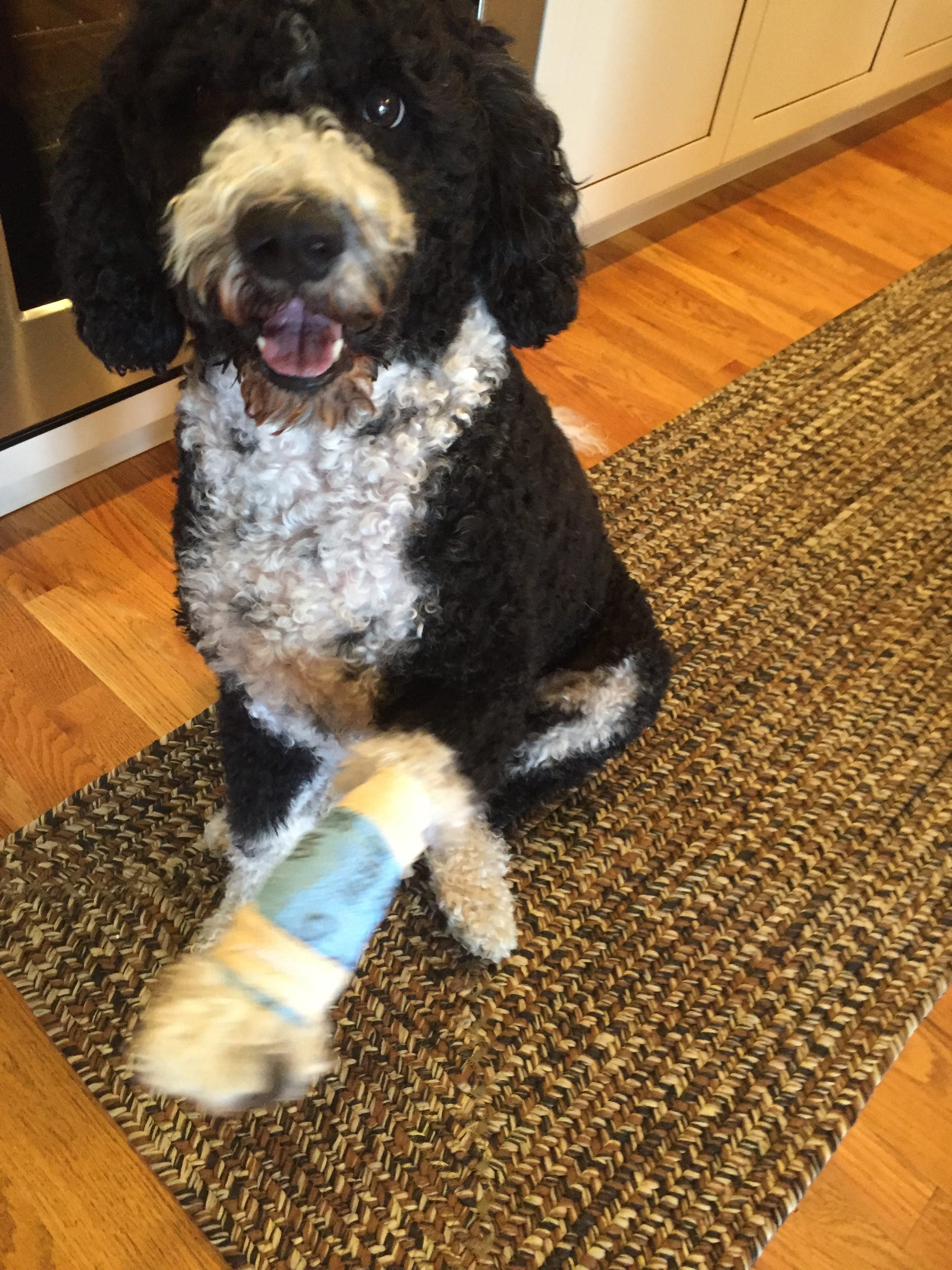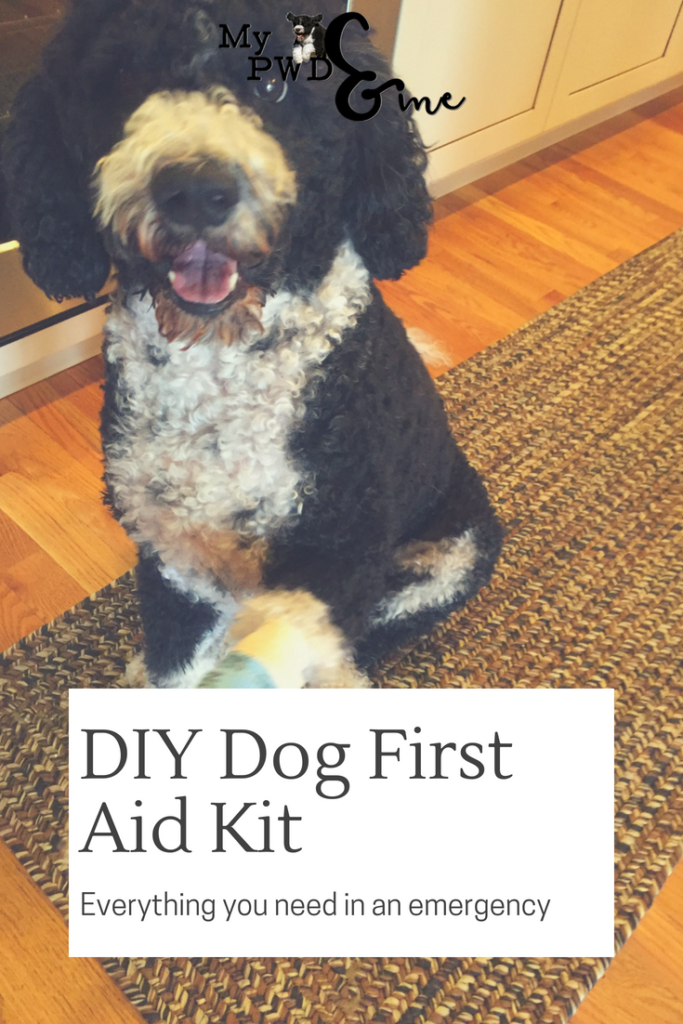As we moving further into Spring and Summer many of us are more active with our dogs. With that comes the potential for injury, stings, and allergic reactions. What should you keep in a dog first aid kit?
Over the past 20 years I’ve collected quite the supply of products. Some have been super handy and some not so much. Many of the products in this dog first aid kit can be purchased in here. The rest you likely have at home.
There may be other things you want to add to your dog first aid kit based on where you live, what activities you are doing, and your dogs health. Your veterinarian is a great resource to help you ensure you have exactly what you need in your dog first aid kit. Grab your FREE PRINTABLE here.
About Your Pet
Your dog first aid kit isn’t just about being able to treat your dog. Having a place where you can keep everything makes it so much easy in an emergency. Here are the things I keep in my kit:
- Current picture of your pet. If they get lost you will know exactly where to grab one.
- List of their vaccination records and microchip number. I have a sheet that I include anytime Miss Millie stays with someone else. Even in this digital age, having this information at your fingers is so important in case of emergency.
- List of any medications or health issues so attending veterinarians know any interactions or underlying issues.
- Information card with your dog’s name, birth date, etc. Also include your regular veterinarian’s contact information in addition to the local emergency veterinarian clinic.
- Keep the ASPCA Animal Poison Control number (888.426.4435) in your kit as well. They are super helpful when your dog ingests something you aren’t sure about.

Household Items
When you are making your kit take a look around the house for things you can use. When I was making the kit for Miss Millie I was able to find a lot of things in the house saving me some money.
- Did you know that squeezing a stinger with tweezers or fingernails can actually release more toxins into your pet? I did not know this! Keep an old credit card or gift card in your kit will help scrap the stinger away.
- Blanket (or pillow case for smaller dogs or cats) and old bath towels. Use the blanket to help hold an injured pet. The towels are to keep your car or you free from blood or other fluids.
- An extra leash, preferably nylon. In case your leash breaks or if you get caught without one you can help control your pet. This is also handy if you find a lost dog.
- Plastic bags to cover a bleeding area or to protect your vehicle. I like the tall kitchen bags for protecting my dog and the large heavy-duty yard bags for protecting the car.
- Needle-nose pliers to remove fish hooks. After seeing so many fish hooks left on the beach we work on for water I started adding them to my kit.
- I haven’t had to use one but I have a soft one just in case. You never know how your dog is going to react when they are in pain.
- Flashlight. I have these everywhere so you may already have one in your car. If you don’t grab a pop socket and convert your cell phone to a hands-free flashlight! Check out the one I have below.
Medical Items
You may have some of these at home, particularly if you have children. You will want to make sure you check the expiration dates at least twice a year to ensure they aren’t expired. If you don’t have them you can pick most of them up here.
- Self-adhesive bandages. I used these with Miss Millie when she tore her dewclaw, she was quite proud of her bandage. They were so easy to manipulate with a moving dog. Make sure you apply them loosely because they tighten on their own.

- Absorbent gauze pads. I was so glad I had some on hand with the torn dewclaw. However, the veterinarian told me that feminine hygiene pads work just as well and are wrapped individually….guess what’s in my first aid kit now?
- Nonstick gauze pads or rolls. These are what I wrapped around the area of the dewclaw prior to putting on the self-adhesive bandage.
- Antibiotic ointment and/or antiseptic wipes. Make sure the one you select doesn’t have a pain relief added.
- Disposable gloves. Anytime you are dealing with blood or other bodily fluids you want to be wearing gloves. And if you have open cuts on your hands it is even more important.
- Hydrogen Peroxide 3% induces vomiting. BUT only do so if you are told to by a vet or poison control. You may be able to open your dog’s mouth and pour it down. However, something like a bulb syringe or turkey baster will be much easier.
- Rectal thermometer. I have never had to use one but I have one just in case. You will want some petroleum jelly for lubricant and then rubbing alcohol to clean it afterwards. The normal body temperature for your dog is 100-103F.
- Benadryl (diphenhydramine) for an allergic reaction. Hold off giving your dog any medication until you’ve spoken with a vet. If get in a bind the general rule is 1mg per pound of body weight. However, I would check with your vet to make sure that is the right dose for your pet.
- Nail Clippers and Styptic Pencil (or powder). I have nail clippers that I use regularly but added a spare set to my kit once Miss Millie tore her dewclaw. If you’ve ever clipped a toenail past the quick you know how much they can bleed. The powder works the best but a pencil is a little smaller for transport. Depending on the size of your dog a pencil may not work.
I hope you never have to use your first aid kit but it is better to be prepared. Is there anything you add to your kit that I missed? Drop us a comment and let us know.
Don’t forget to sign up for our newsletter or follow us on social media. You never know what we are up to next!


